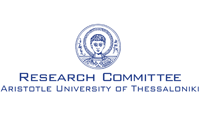Parthena Charalampidou
Aristotle University of Thessaloniki
This email address is being protected from spambots. You need JavaScript enabled to view it.
Localisation and emotional appeal: A semiotic approach to the study of multilingual NGO
Abstract
Technological development as well as the increasing use of the Internet have allowed both for-profit and non-profit organizations to advertise and strengthen their corporate image worldwide. In addition, websites’ effectiveness is highly dependent on their localization towards the end user’s native language as well as on the level of cultural adaptation (Nitish 2004). That is why, more and more companies decide to invest on the internationalization and localization of their websites. Voluntary organizations follow similar marketing strategies in order to strengthen their image in the greek-speaking world. According to Nikandrou (2015) corporate websites are the main means of volunteer attraction (70%). Moreover, NGO website home pages enhance fund raising though the use of emotional appeal, as indicated at the first stages of our research.
In the present announcement we will attempt to analyze the transfer of emotional appeal in NGO localized websites. We will examine comparatively verbal and non-verbal means of persuasion as well as the use of different semiotic systems in meaning making. Emphasis will be given on the cultural differences of the target audience in each locale and on the role those differences might play in the adoption of specific techniques of emotional appeal.
The methodology used for the study of the multimodal genre of websites and the transfer of its main function is a combination of multimodal methods of discourse analysis and Translation Studies theories. More specifically, we will attempt to combine Skopos Theory (Reiss και Vermeer 1984, Nord 1997) with tools used in semiotic analysis such as image-text relationship (Barthes, 2007) and the grammar of images and of colours (Kress and Van Leeuwen, 1996, 2002).
Key words: NGO website localization, operative function transfer, persuasive discourse multimodal analysis, semiotic approaches to translation, localization and culture.
Bibliography
- Barthes, R. (2007) Εικόνα-Μουσική-Κείμενο. Μετάφραση Γ. Σπανός. Αθήνα: Εκδόσεις Πλέθρον.
- Kress, G. and T. van Leeuwen (1996) Reading images: The grammar of visual design. London: Routledge
- Kress, G. and van T. Leeuwen (2002) Colour as a semiotic mode: notes for a grammar of colour. Visual Communication, 1 (3), σσ. 343-368.
- Nord, C. (1997a) Translating as a Purposeful Activity: Functionalist Approaches Explained. Manchester/Northampton MA: St. Jerome.
- Reiss, Κ. & H.J. Vermeer (1984) Grundlegung einer allgemeinen Translationstheorie. Tübingen: Niemeyer
- Nitish S., O. Furrer and M. Ostinelli (2004) “To Localize or to Standardize on the Web: Empirical Evidence from Italy, India, Netherlands, Spain, and Switzerland” in The Multinational Business Review, Vol. 12, No 1: Emerald, p. 69-88







